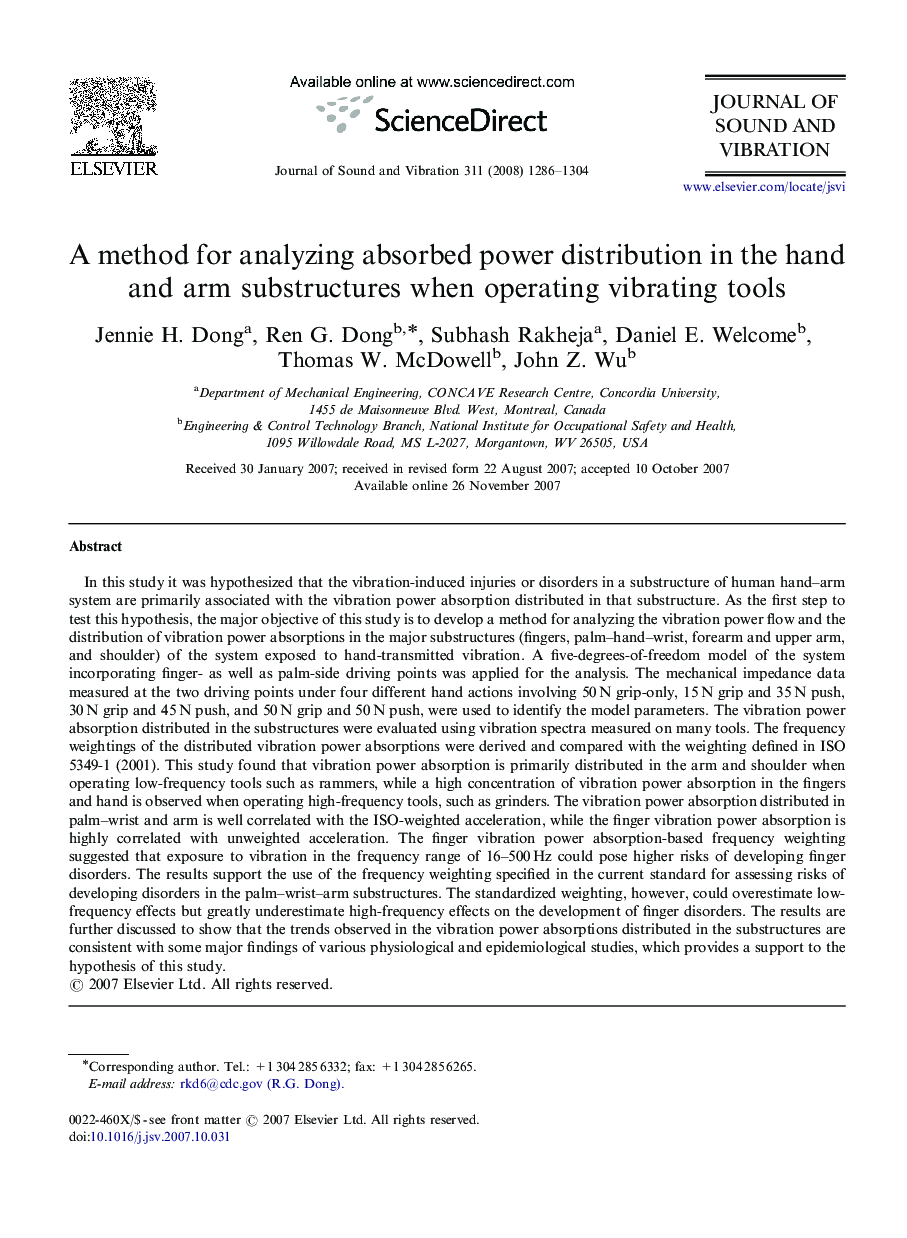| کد مقاله | کد نشریه | سال انتشار | مقاله انگلیسی | نسخه تمام متن |
|---|---|---|---|---|
| 291359 | 509759 | 2008 | 19 صفحه PDF | دانلود رایگان |

In this study it was hypothesized that the vibration-induced injuries or disorders in a substructure of human hand–arm system are primarily associated with the vibration power absorption distributed in that substructure. As the first step to test this hypothesis, the major objective of this study is to develop a method for analyzing the vibration power flow and the distribution of vibration power absorptions in the major substructures (fingers, palm–hand–wrist, forearm and upper arm, and shoulder) of the system exposed to hand-transmitted vibration. A five-degrees-of-freedom model of the system incorporating finger- as well as palm-side driving points was applied for the analysis. The mechanical impedance data measured at the two driving points under four different hand actions involving 50 N grip-only, 15 N grip and 35 N push, 30 N grip and 45 N push, and 50 N grip and 50 N push, were used to identify the model parameters. The vibration power absorption distributed in the substructures were evaluated using vibration spectra measured on many tools. The frequency weightings of the distributed vibration power absorptions were derived and compared with the weighting defined in ISO 5349-1 (2001). This study found that vibration power absorption is primarily distributed in the arm and shoulder when operating low-frequency tools such as rammers, while a high concentration of vibration power absorption in the fingers and hand is observed when operating high-frequency tools, such as grinders. The vibration power absorption distributed in palm–wrist and arm is well correlated with the ISO-weighted acceleration, while the finger vibration power absorption is highly correlated with unweighted acceleration. The finger vibration power absorption-based frequency weighting suggested that exposure to vibration in the frequency range of 16–500 Hz could pose higher risks of developing finger disorders. The results support the use of the frequency weighting specified in the current standard for assessing risks of developing disorders in the palm–wrist–arm substructures. The standardized weighting, however, could overestimate low-frequency effects but greatly underestimate high-frequency effects on the development of finger disorders. The results are further discussed to show that the trends observed in the vibration power absorptions distributed in the substructures are consistent with some major findings of various physiological and epidemiological studies, which provides a support to the hypothesis of this study.
Journal: Journal of Sound and Vibration - Volume 311, Issues 3–5, 8 April 2008, Pages 1286–1304